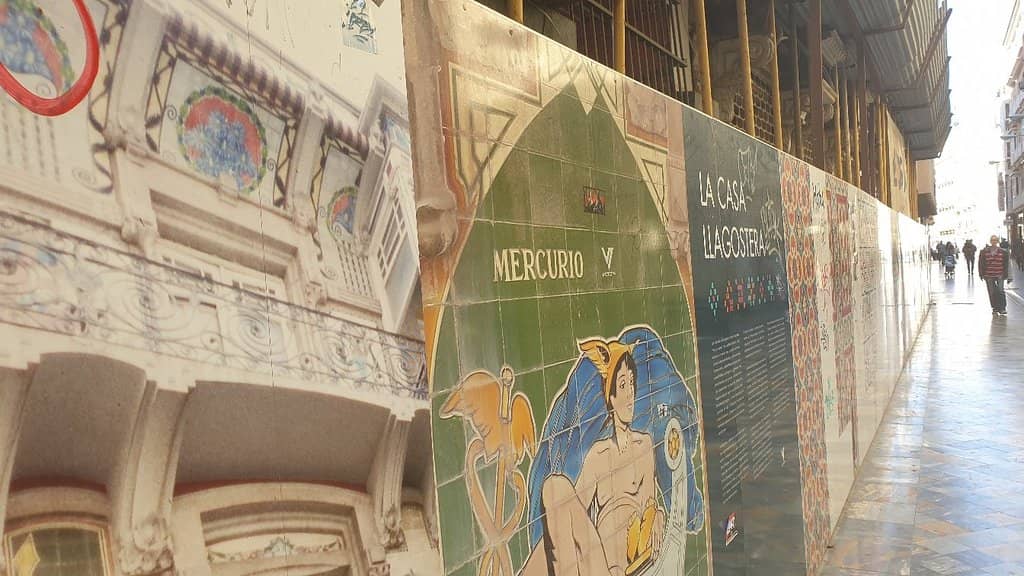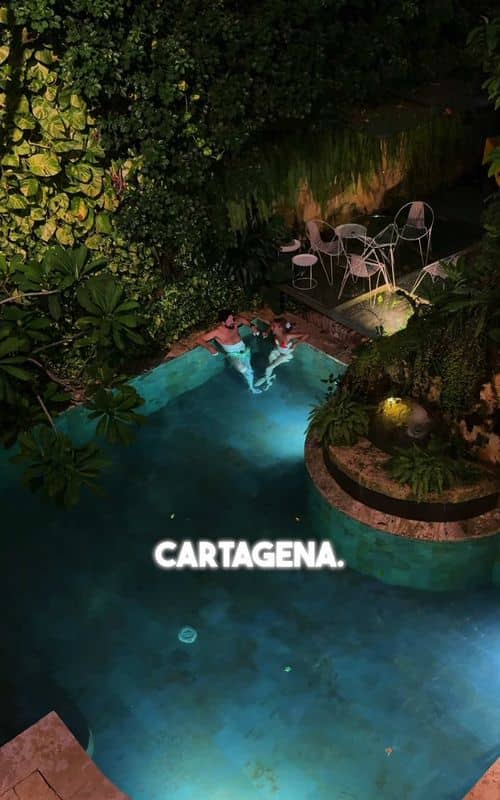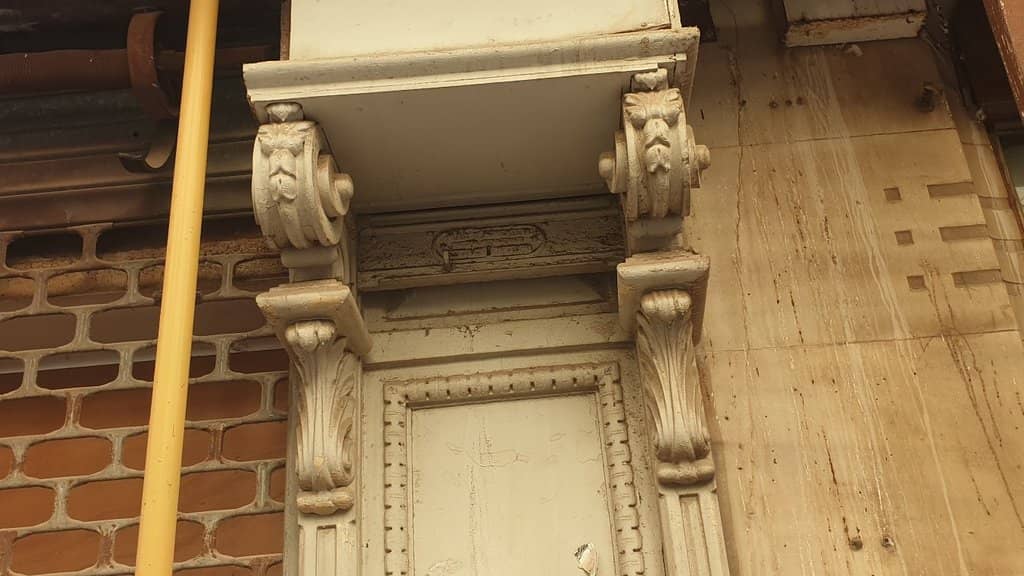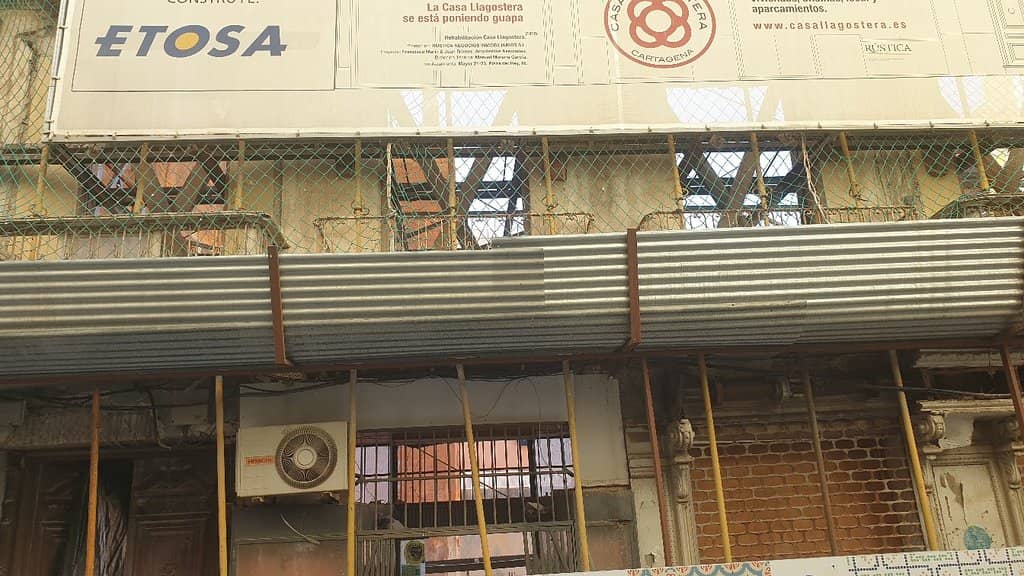
Casa Llagostera
A modernist architectural gem by Victor Beltrí, Casa Llagostera showcases intricate ceramic art and a complex history, including Roman ruins discovery...

Highlights
Must-see attractions

Social
From TikTok & Reddit
Best Time
Best for viewing facade details

Casa Llagostera
Best Time
Best for viewing facade details

Highlights
Must-see attractions
A modernist architectural gem by Victor Beltrí, Casa Llagostera showcases intricate ceramic art and a complex history, including Roman ruins discovery.
"A modernist masterpiece by Victor Beltrí, Casa Llagostera is a testament to Cartagena's rich architectural and historical tapestry."

Admire the Facade Details
Look closely at the ceramic work by Gaspar Polo, depicting Minerva and Mercury. :camerawithflash:
Understand the History
Research Victor Beltrí and the house's past for a richer appreciation. :books:

Highlights
Discover the most iconic attractions and experiences
Victor Beltrí's Modernist Facade
Calle Mayor, Cartagena
Admire the intricate ceramic decoration featuring allegorical figures and regional coats of arms, a hallmark of early 20th-century Catalan Modernism.
Roman Port Ruins Discovery
Basement level
Beneath the house lie the remnants of the ancient Roman port of Carthago Nova, a fascinating archaeological layer to its history.
Ongoing Renovation Efforts
Exterior
Witness the preservation of this architectural piece, with ongoing work aiming to restore its beauty and structural integrity.
Plans like a pro.
Thinks like you
Planning Your Visit
Understand Casa Llagostera's Complex History
Location and Context in Cartagena
Best Times
Insider Tips
from TikTok, Instagram & Reddit
Admire the Facade Details
Look closely at the ceramic work by Gaspar Polo, depicting Minerva and Mercury. :camerawithflash:
Understand the History
Research Victor Beltrí and the house's past for a richer appreciation. :books:
Contextualize the Ruins
Imagine the Roman port beneath; it's a unique layer of history. :ancient_roman:
Observe Renovation Progress
Note the ongoing efforts to preserve this modernist gem. :construction_worker:
Tips
from all over the internet
Admire the Facade Details
Look closely at the ceramic work by Gaspar Polo, depicting Minerva and Mercury. :camerawithflash:
Understand the History
Research Victor Beltrí and the house's past for a richer appreciation. :books:
Contextualize the Ruins
Imagine the Roman port beneath; it's a unique layer of history. :ancient_roman:
Observe Renovation Progress
Note the ongoing efforts to preserve this modernist gem. :construction_worker:
What Travellers Say
Reviews Summary
Casa Llagostera is recognized as a significant example of modernist architecture by Victor Beltrí, featuring a beautiful ceramic facade. However, its current state of renovation and past controversies regarding demolition and urban planning have led to mixed perceptions among observers.
"Yet another example of the atrocities that city councils and regional governments commit in cities, from an urban planning perspective. A house, a clear example of the early 20th-century modernist style designed by architect Victor Beltrí and with the consent of the authorities, was demolished by a developer planning to build a parking lot. This project failed to materialize because, shortly after excavating, they found the ruins of a Roman port. Since 2009, it has remained abandoned, with what was once one of the city's most beautiful facades damaged and buried under a wall of scaffolding.
I'm attaching a photo so you can see what an architectural gem they've destroyed."
Julia Martínez Paños
"A house in the middle of renovation, of which only the exterior walls remain and we hope they do a good renovation, is beautiful in this endearing place."
Constancio de las Heras
"They should tear down the facade once and for all; it seriously spoils the church next door. It's an example of Cartagena's modern ruins, which unfortunately are scattered throughout the city center, giving a terrible image to a city that aspires to be a provincial capital."
Alberto Gila Navarro
What People Like
What People Dislike
Frequently Asked Questions
🚇 🗺️ Getting There
Casa Llagostera is located on Calle Mayor in the heart of Cartagena. It's easily accessible by foot if you are already in the city center. Public transport options include local buses that stop nearby. :bus: If arriving by car, be aware that parking in the historic center can be challenging.
Yes, Casa Llagostera is centrally located on Calle Mayor, putting it within walking distance of many other historical sites and attractions in Cartagena's city center. :map:
🎫 🎫 Tickets & Entry
Casa Llagostera is primarily viewed from the exterior. There isn't a traditional ticketed entry for public tours of the entire building as it has a complex history of development and renovation. :ticket:
As it's an exterior viewing experience, there are no set visiting hours. However, it's best to view the facade during daylight hours to appreciate the architectural details. :sunwithface:
While the facade is visible, full public tours of Casa Llagostera are not consistently available due to its ongoing renovation and historical context. Check local listings for any special open days. :informationdeskperson:
🎫 🏛️ Architecture & History
Casa Llagostera was designed by the renowned modernist architect Victor Beltrí, a key figure in early 20th-century Catalan Modernism. :architect:
The house is a prime example of the Modernist style, characterized by its extensive ceramic decoration, central balconies, and side bay windows. :art:
It was commissioned by the Llagostera family, Catalan merchants, and completed in 1916. Its history also includes the discovery of Roman port ruins during excavation and debates over its preservation. :scroll:
During excavation for a planned parking lot, developers discovered the remains of the ancient Roman port of Carthago Nova beneath the site, adding a significant archaeological layer to the location. :roman_centurion:
The house has been a subject of debate due to past demolition plans, its current state of renovation, and its impact on the surrounding urban landscape, with some finding it spoils the view of the adjacent church. :speech_balloon:
📸 📸 Photography
The best vantage point for photographing Casa Llagostera is directly from Calle Mayor, allowing you to capture the full facade. Early morning or late afternoon light can enhance the colors of the ceramic tiles. :camerawithflash:
Generally, access inside Casa Llagostera is limited due to its ongoing renovation. Exterior photography is permitted and encouraged to appreciate its architectural beauty. :iphone:
For Different Travelers
Tailored advice for your travel style
Architecture Enthusiasts
History Buffs
Deep Dives
In-depth insights and expert knowledge
The Architectural Legacy of Victor Beltrí
Beltrí's work in Cartagena is characterized by its integration of local materials and influences with the broader Modernist movement. His designs often feature flowing lines, organic forms, and a vibrant use of color, particularly through tilework. Casa Llagostera exemplifies this, with its facade acting as a canvas for extensive decorative elements that were reduced in construction to fit the typical Cartagena scheme of central balconies and side bay windows.
Understanding Beltrí's contribution is key to appreciating Casa Llagostera. His architectural vision transformed urban landscapes, and this house, despite its complex history, remains a significant example of his artistic and structural prowess. The ongoing restoration efforts aim to preserve this important piece of Cartagena's architectural heritage for future generations.
Casa Llagostera: A Site of Historical Discovery and Debate
Since the Roman ruins were found, the site has remained in a state of flux, with the facade often covered by scaffolding. This has led to discussions and debates among locals and urban planners. Some view the preserved facade as an architectural gem that should be fully restored, while others feel it detracts from the surrounding urban environment, particularly the adjacent church.
The ongoing renovation efforts reflect a commitment to preserving this modernist structure, but the site's complex past—from its architectural significance to the archaeological discoveries and urban planning controversies—makes it a unique and thought-provoking landmark in Cartagena. It serves as a reminder of the city's rich and multifaceted history, from Roman times to the early 20th century.



Social
from TikTok, Instagram & Reddit